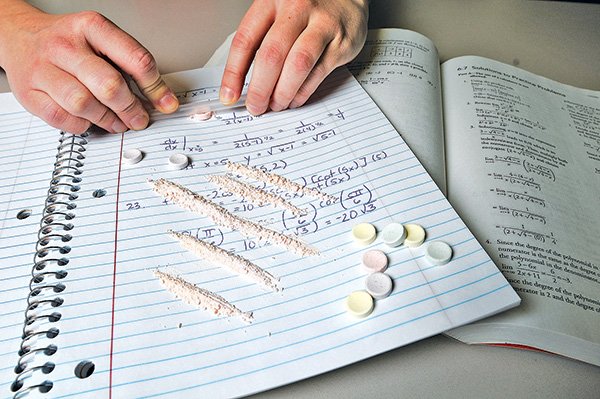Karla Gutierrez was in middle school when she saw a boy crush Smarties in a wrapper, then smoke it like a cigarette. He ended up coughing and said it burned his throat.
“It’s nothing new, but it wasn’t as popular, I guess, until now,” said Gutierrez, a junior at Springdale High School.
Information about students using Smarties as drugs has been circulating on the Internet. There are videos on YouTube of teenagers snorting crushed Smarties and using a tube of Smarties like a cigarette.
Smarties are small, round, multicolored candies which are wrapped in cellophane. Smarties are also sold under other brand names, according to the company’s website.
Snorting Smarties isn’t life-threatening, but it can cause health problems, said Kathy Launder, Springdale School District’s nursing supervisor. Small pieces of candy that are inhaled can irritate tissue, cause scarring and result in a lung infection.
“You’re not supposed to snort or inhale substances,” she said.
Robert Watson, a senior at Har-Ber High School in Springdale, said he has seen students crush up Smarties, suck the dust into their mouths and blow it out like they are smoking, but he’s never heard about snorting the dust.
Snorting Smarties dust got a Rogers High School student suspended last year, said Charles Lee, principal. The student was with his friends in the computer lab and was snorting Smarties. Lee said he thinks the student was trying to impress his friends.
The student who snorted Smarties was suspended under a district policy for grades 6 through 12, Lee said. If a student has a substance that resembles drugs, he or she can be suspended for 10 days. If the student undergoes drug assessment and doesn’t have a drug or alcohol problem, the suspension is reduced to five days, he said.
At A Glance
District Policies For Look-Alike Drugs On Campus
Springdale — Discipline on a case-by-case basis with a punishment up to suspension or expulsion.
Rogers — Punishment or suspension for 10 days. If the student undergoes a drug assessment and has no problems with drugs or alcohol, the suspension is reduced to five days.
Bentonville — Listed as a “major offense” and may be treated the same as a legitimate drug depending on the situation. Discipline on a case-by-case basis with punishment ranging from a warning to expulsion.
Fayetteville — Did not provide requested information by deadline.
Source: Staff Report
Springdale and Bentonville school districts have similar policies. In Springdale, students who bring a substance resembling a drug to school are disciplined on a case by case basis up to suspension or expulsion, said Jared Cleveland, district deputy superintendent for personnel.
In Bentonville, bringing a substance that looks like a drug onto campus is listed in district policies as a “major offense” and may be treated the same as a legitimate drug, depending on the situation, said Chad Scott, principal at Bentonville High School. Punishment is determined on a case by case basis and ranges from a warning to expulsion.
The student snorting Smarties at Rogers High School was an isolated incident — there has been no recurrence, Lee said. The school has also had incidents of students taking a bag of oregano — which resembles marijuana — to school.
“I don’t think it’s really prevalent,” he said.
Scott and Cleveland said they haven’t heard about students using Smarties as drugs in Springdale or Bentonville.
Lee said this type of behavior concerns him because it shows students have knowledge of drug use they shouldn’t have.
Gutierrez said it also concerns her, because she has two younger brothers. She doesn’t want them to try snorting or smoking Smarties.
John Lindsay, Region 2 director of the Drug Abuse Resistance Education program, said he had never heard of students snorting Smarties dust, but does remember kids talking about doing the same thing with Pixie Sticks when he was in middle school. The national Drug Abuse Resistance Education program involves police officer-led classroom lessons about decision making, drugs, alcohol and violence. Region 2 covers 12 states including Arkansas.
“Why are the youth in our community feeling the need to engage in risky behaviour?” he asked.
Risky behavior, like the use of candy to imitate drugs, can lead students to use real drugs, Lindsay said. He attributes simulating of drug use by children to the influence of the media, where students can see the use of drugs and alcohol regularly. Children imitate what they see, and that’s what happens when they are influenced by the media.
“Part of this is our culture,” he said.

